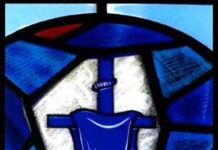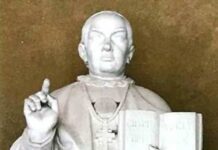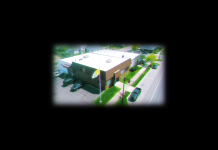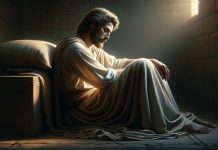
You are not signed in as a Premium user; you are viewing the free version of this program.
Premium users have access to full-length programs with limited commercials and receive a 10% discount in the store!
Sign in or Sign up today!
Twenty years ago, on a Sunday morning in January, Boston Globe readers opened their newspapers to a headline that became the first investigative story to go viral on the internet — and the Catholic Church was at the heart of it.
Church Militant’s Kristine Christlieb takes us back to the newspaper’s “Spotlight” and the Church’s response.
Sacha Pfeiffer, reporter, Boston Globe:
The Church had always said there’s only one or two bad priests out there; it’s an isolated problem. OK, we thought maybe there are six or seven. Then, suddenly, we thought, ‘Could there be a dozen?’ And then we seemed to have 20. And by the time we were confident in publishing our first story about the scale of the problem, we said there were at least 70. We now know there were hundreds in the Boston archdiocese.
It was in 2002 that news first broke of a global clergy sex abuse crisis.
But there had been smaller news outbreaks before. In the mid-1980s, abuses in the diocese of Lafayette, Louisiana, prompted independent investigators to prepare a report for the bishops that proved to be prophetic. It warned, “The secular press attempts to portray the Church as hypocritical, as an organization preaching morality and providing sanctuary to perverts. The attempts are in evidence today and shall escalate.”
Then came another outbreak in 1990 in New Mexico that landed the diocese of Santa Fe on 60 Minutes.
Mike Wallace, correspondent, 60 Minutes: “She was 15 years old in 1974. She took a nap one day on a cot in the office, and she woke up with Fr. Robert Kirsch’s tongue in her mouth.”
Still, the bishops did not act.
The John Jay Report, later commissioned by the United States Conference of Catholic Bishops, indicates 1960–2000 were the “golden years” for clergy sex abusers.
The scale of the abuse and cover-up in America’s most Catholic city — and the global news coverage — finally awakened the USCCB.
The bishops’ response was the Charter for the Protection of Children and Young People, also called the “Dallas Charter.” Among its provisions were zero tolerance of sex abuse, establishment of a National Review Board and a consistent response to reports of clergy abuse.
Notably absent from the charter was any accountability for bishops. Coordinating the Dallas Charter effort was Cdl. Theodore McCarrick.
Cdl. Theodore McCarrick: “Now, anyone who has this problem, who is credibly accused, will never work in the United States.”
There were high hopes for the National Review Board, but there were also red flags.
Former Oklahoma governor Frank Keating was appointed its first chairman but resigned within 12 months. He compared Church officials to the Mafia and warned, “Eventually, it will all come out.”
The review board’s effectiveness has been uneven. There is now a hotline for people to report bishop cover-up and sex abuse. But the National Review Board says it, too, needs better oversight.
The National Review Board’s 2021 annual report documents 35% of American dioceses are not in compliance with the Dallas Charter.




















